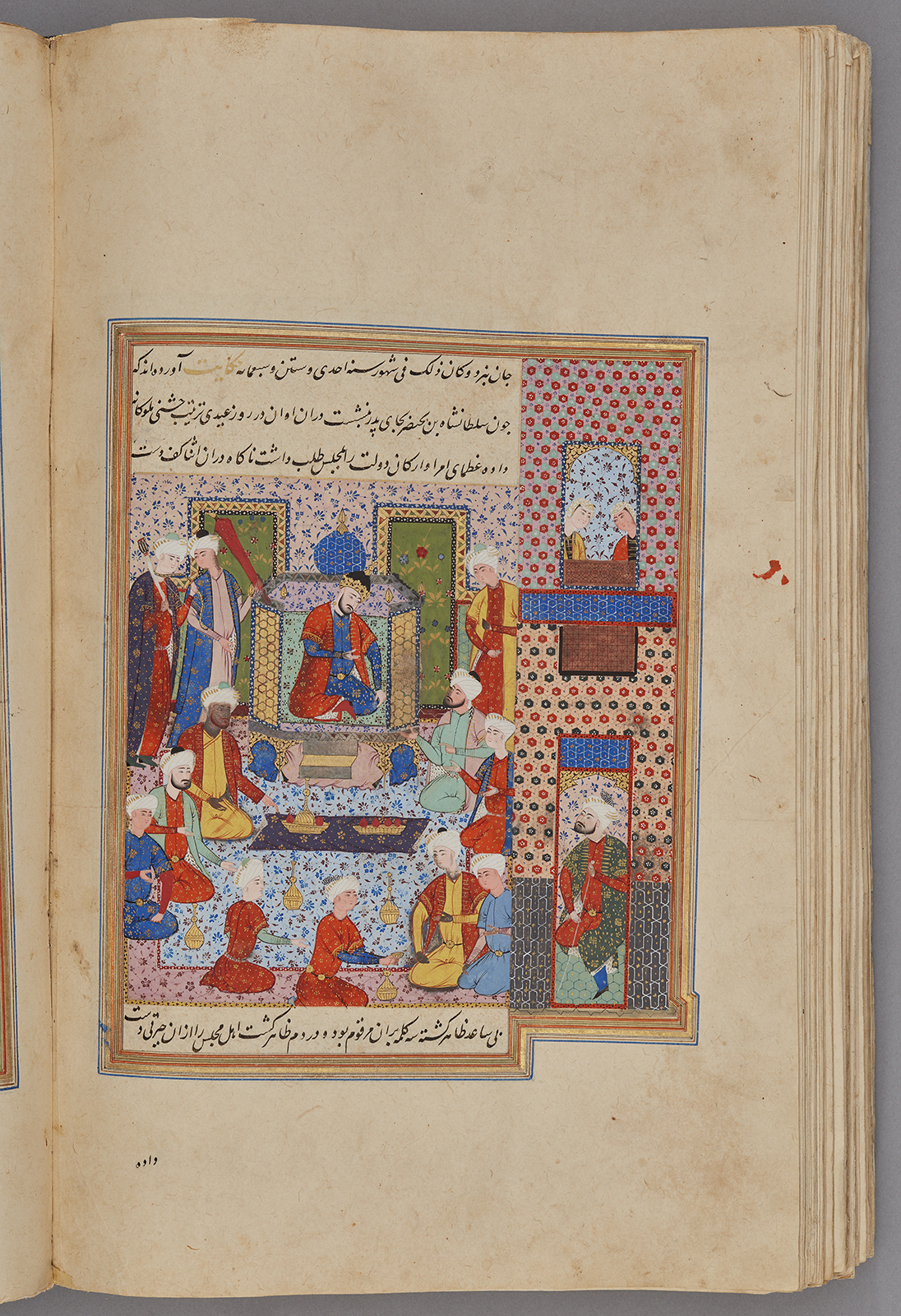Click on the image to zoom
A court scene, Folio from a manuscript of Nigaristan
- Accession Number:AKM272.f265v
- Creator:Author: Ahmad b. Muhammad Ghaffari, Persian, died 1567 Scribe: Ahmad al-Shirazi
- Place:Iran, Shiraz (probably)
- Dimensions:38.7 cm × 25 cm × 6.4 cm
- Date:1573-74 CE/980 AH/AH 980
- Materials and Technique:Ink, opaque watercolour, and gold on paper
The miniature painting "A court scene" is from an intact manuscript of Kitab-i Nigaristan, a collection of anecdotes and historical incidents written in prose by the historian and scholar Ahmad Muhammad Ghaffari (1504–1567/68) of Kashan in 1551–2. This illustrated manuscript, dated 1573, was probably produced in a Shiraz workshop.
See AKM272 for more information about the manuscript and links to the other illustrations.
Further Reading
The miniature painting depicts a court scene where two perspectives of a building are painted side by side. The image is vertically divided into two parts, with the façade on the right and the building’s interior on the left. This approach to spatial division and perspective is shared by many other illustrations in the Nigaristan. Again, the main room is situated here between the two text boxes.
The text tells the story of a sultan who receives an audience on the day he takes over the throne from his father. It is predicted that he will die in three days. He laughs about it, but the prediction comes true and he dies three days later.
Court scenes like these are among the favourite scenes depicted in Persian miniature paintings. They usually present a setting in which a crowned figure is enthroned. The throne can be in a landscape, often in lively nature with flowers and trees in blossom or in an interior, depending on the context of the illustration. Usually these scenes are supplemented with other figures such as servants and musicians.
- Elika Palenzona-Djalili
References
Note: This online resource is reviewed and updated on an ongoing basis. We are committed to improving this information and will revise and update knowledge about this object as it becomes available.


